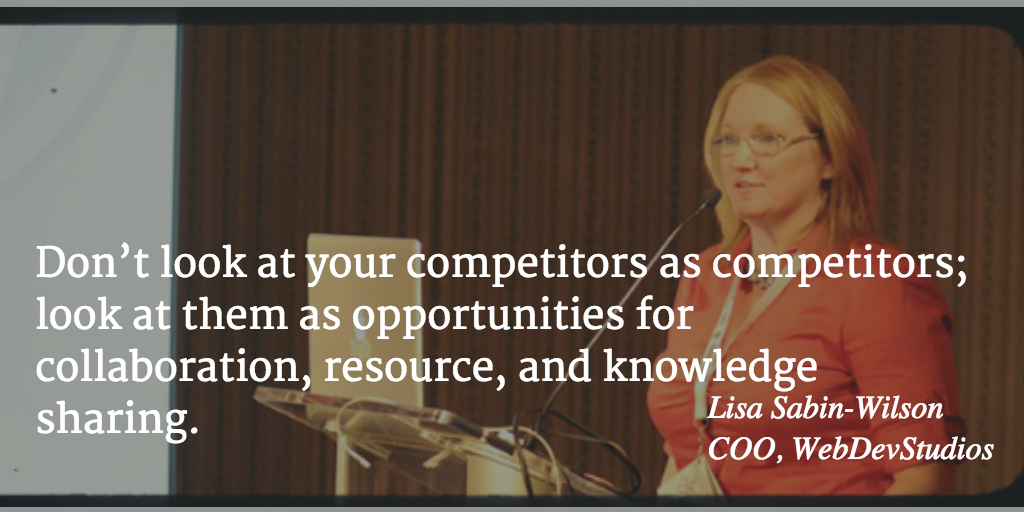Nowadays it’s considered fairly standard practice for every company to have a blog, but that doesn’t mean they’re always doing it well.
We’ve all seen them–the company blogs that bore, that shove their product down your throat, that spread misinformation or otherwise misrepresent the company in the worst ways (unprofessionally, awkwardly, insufficiently!). Content marketing is an amazing tool to utilize when promoting the work that you (and your team) do, but there is a way to do it right–and doing it right is absolutely vital.
Chris Lema recently gave us a very kind shout out for having a fantastic company blog, and we thought that it might be useful to share a little bit on how and why we create what we do. This is hardly comprehensive; there are a million ways to come up with valuable, worthwhile content, and, of course, it will vary wildly depending on your industry, but here are a few starting points and general strategies that we use here at WebDevStudios.
Know Your Audience
A fundamental element of any quality marketing strategy is knowing who your clients are (and who you want your clients to be). If your demographic is primarily dads who love tech news and work from home, blog posts on Sephora’s newest products or the horrors of cubicle life are clearly not going to appeal to them. What is your audience reading? What kind of articles does your audience share?
Knowing what these folks are looking at and interested in will give you a good starting point as to where you will want your content to go. Flex that empathy muscle and put yourself in their heads: If you were them, what would appeal to you? The answer to that question, when combined with who you want your company to be and what you want to represent, should be at the core of your strategy, and act as a constant reference point when deciding what to put out there.
Collaborate Your Heart Out
While you may have one person running your strategy and curating your content (highly recommended), creating content should be a collaborative activity. If you’ve read any of our recent posts, you’ll notice that collaboration tends to live at the center of much of what we do at WDS–and as a result, it ends up being mentioned in our posts (and elsewhere!).
Whether it’s Chris mentioning that he turned to his fellow devs for their advice before coming up with a creative solution to a problem on his own, Jay mentioning what Michael said in response to his post on using AJAX, or Brad repeatedly stating the significance of working with people who are smarter than you (and learning from them, like we often do from commenters as well as fellow event attendees and colleagues), we find collaboration to be incredibly crucial, and sing its praises on the regs.
When it comes to content marketing, collaboration can benefit you in a bunch of different ways, including:
- Team Contributions to Your Blog
The only way we’re able to have a wide variety of subject matter is by having our brilliant devs, designers, and PMs come up with subjects that interest them and relate to what they are currently immersed in. It’s a cliché for a reason, but many heads are better than one. Each person on our team has something different to offer–different perspectives, different expertise, different projects they are working on, different passions.
Tapping into this variety is crucial to creating engaging subject matter. By getting your team involved, they’ll be invested in the success of your content; after all, it’s their work that is being promoted, too, and they get the opportunity to share something they’re excited about. What’s more: It gives your clients the opportunity to see who they are working with–not only to understand what capable, skilled people they are going to have the opportunity to hire, but also, gives them a sense of who is working behind the scenes.
People want to know who you (and your team) are. Allow your team the opportunity to represent their skillz and speak for themselves, and your audience will get to know exactly who they’ll be working with if they hire you (and if you’ve hired right, they’ll be clamoring for the opportunity to work with your team of superstars).
- Inspiration Strikes!
We actually have a running document with topic ideas; it’s a braindump of any possible topic that could be interesting to our readership (and also, that interests us!). We also regularly have group and one-on-one conversations regarding what would be interesting to cover. Did we have a recent success with a client project? Was there a lesson recently learned that we think might lead to some hard-earned wisdom worth imparting to the masses? Hey, did you folks read this recent article? What do you think of what happened there? Et cetera.
Bouncing ideas off of each other is a fantastic way to get the most out of your content.
- Take Advantage of Multiple Perspectives
Most of our posts end up not only being run by management (and the editor, meaning yours truly), but often, the author of the post will share it with the entire team and request feedback. As a result, there is usually a combination of additional insight, corrections, and encouraging feedback given to the author–all of which is wildly beneficial for both the blog (and for team bonding!).
Know What Else Is Out There
Creating fantastic content isn’t that different from figuring out the basics of business: You need to know what’s out there already and what needs aren’t being served. Knowing what conversation is being had amongst your competitors and fellow industry professionals is imperative; if you see a subject that isn’t being discussed and deserves a mention, you’ve got an excellent opportunity for a post right there.
Greg recently did something along these lines; he noticed that there were a lot of posts talking about why accessibility is important, but not very many covering the how, and so he took it upon himself to start the trend.
If there’s a hot topic that is being widely debated, or a question that you are hearing your clients asking over and over again (without any real concrete answer), perhaps you (or someone on your team) can offer some of your expert insight.
Lastly, you always want to make sure that you aren’t plagiarizing or just regurgitating the same old stuff that everyone else is doing. Sure, there will inevitably be overlap in terms of subject matter, but having overlap in terms of topics isn’t the same as stealing or being redundant.
Loosen Up
There’s a difference between being professional and being downright sterile, but from some company blogs, you wouldn’t ever know it! It is possible to be personal–even downright irreverent–while still maintaining professional boundaries and upholding professional standards. Part of letting your audience get to know you and your team is letting your sense of humor and heart shine through! Whether it’s Rami’s hilarious WordCamp Lancaster post over at the Maintainn blog, or Corey’s creative gif usage, their approaches made their posts both useful and entertaining.

Of course, this does require common sense; perhaps don’t riff on that political meme or share that racy joke your quirky uncle told you at your last family reunion. Be smart, and if you struggle with knowing what’s appropriate and what isn’t in the context of humor, surely err on the side of caution (or go back to the collaborative element by reaching out to your team and asking for additional perspective!). If you can, though, have some fun with it! Keeping it light and adding a dose of humor is as good for business as it is for the soul.
Get an Editor
Even the best writers need an editor, and some of the folks on your team may not be (self-admittedly) the best writers around. Hey, we all have different skills.
Having someone to act as a designated editor not only ensures that you’ll have consistent styling and quality in your published posts, but also, gives the members of your team who struggle with the writing element someone to go to when they need an assist.
A good editor has a keen eye for detail (as much as any infallible human being can, anyway), and is capable of identifying how to improve upon first drafts–whether that means editing for coherency, working with the writer to help flesh out the point(s) they are trying to make, or using their objective eye to recognize what the writer may have overlooked while being deep in the subject they were writing about.
Plus, nothing is less impressive than a company blog (or site) riddled with typos and errors. If you’re really in a bind, you can also use a service like Grammarly to catch the little errors that we all make.
Cut the Marketing Crap (and Extend the Spotlight)
The best salespeople know that most folks are resistant to being told what to do, and even more resistant to feeling manipulated (after all, who wants to feel like they are being had?). Treat your audience like you would like to be treated; treat them like they are capable, intelligent adults capable of making sound decisions.
They know that you’re a company, and they know that you’re selling a product; it’s not necessary to constantly remind them THAT YOU’RE AVAILABLE AT ALL TIMES TO TAKE THEIR BUSINESS BY THE WAY DID THEY KNOW THAT YOU HAVE THIS DEAL FOR FIVE DOLLARS DO YOU WANT TO HIRE US YOU SHOULD DEFINITELY HIRE US.
You don’t have to try so hard. They know that you want their business. Make it simple by giving them a reason to want to hire you.
It’s not as complicated as you may think: All you need to do is establish yourself as professional, well-informed, skilled, and easy to work with. Haranguing your audience will just drive them into the arms of another company…who is a heckuva lot less obnoxious than you.

What’s more: Self-promotion is a necessity, but promoting yourself exclusively and not recognizing the achievements, insights, and successes of the other folks in your industry comes across as self-serving and, frankly, a little boring.
Lisa’s philosophy of viewing competitors as connections that inspire growth and opportunity is spot on; even those of us that are competing have our own unique assets to offer, and most of us know that not every client is going to be a good fit for every company. Highlight others in your community, and you’ll build connections with colleagues, as well as maintain diversity in what you’re sharing and avoid that pesky “PICK ME! PICK ME!” vibe.
Now Go Forth, Young Grasshopper
Personally, I believe that content marketing is one of those things where if you’re going to do it, you’d better do it well, or you might as well pass on it entirely. A bad blog is worse than no blog at all.
Hopefully you’ve found some helpful tidbits in here, but I’d love to hear what you’ve found to be successful (or if you think anything I’ve said here is just plain wrong and dumb!). Is there anything you disagree with or that I missed? Let me know in the comments!
Comments